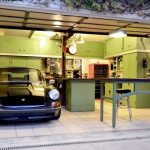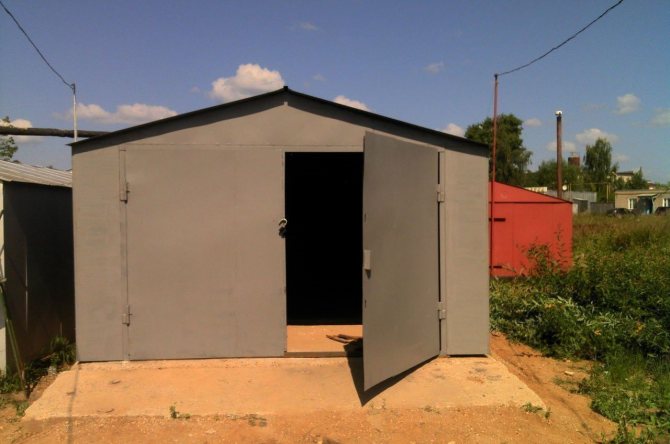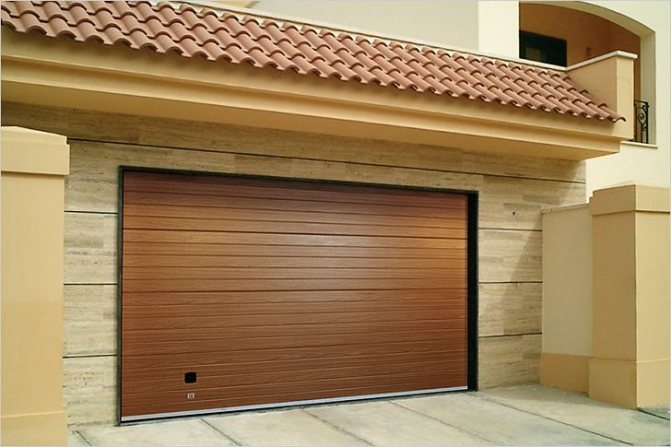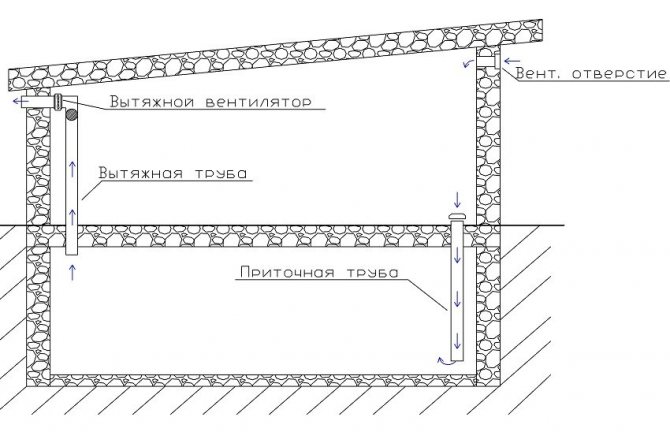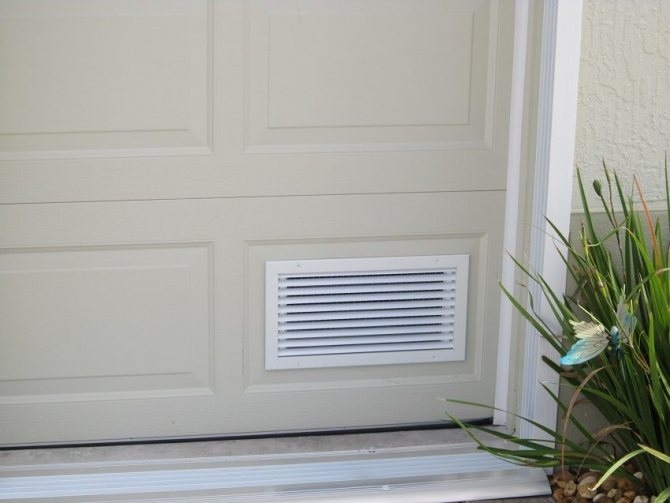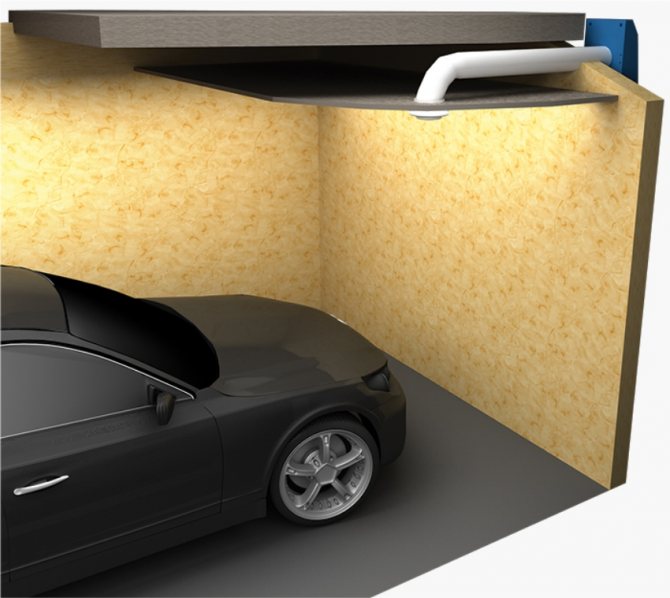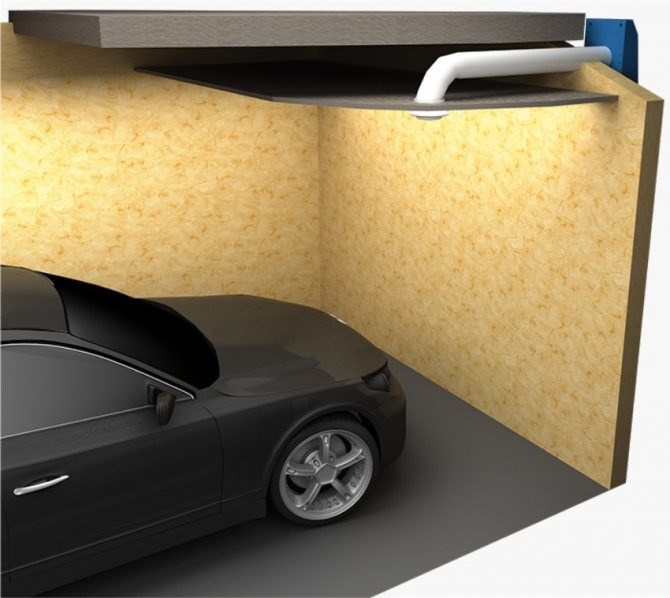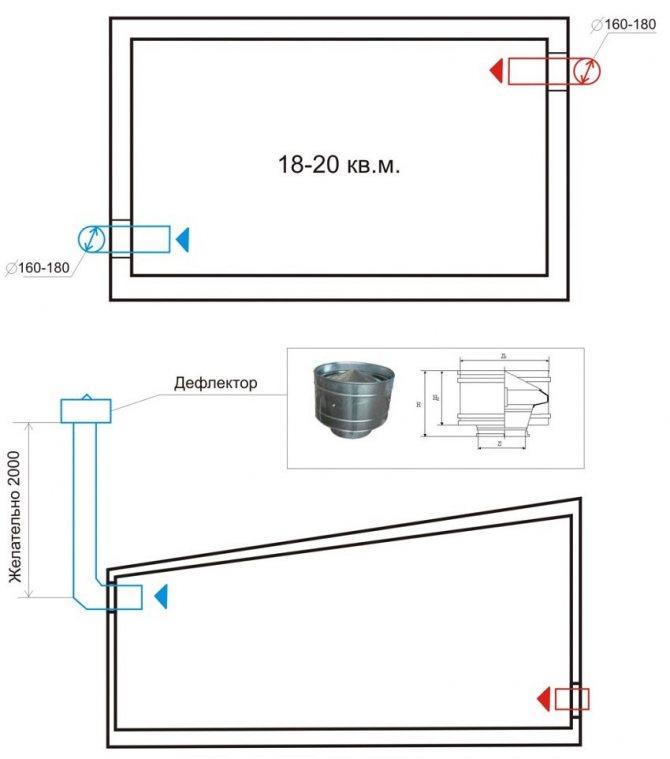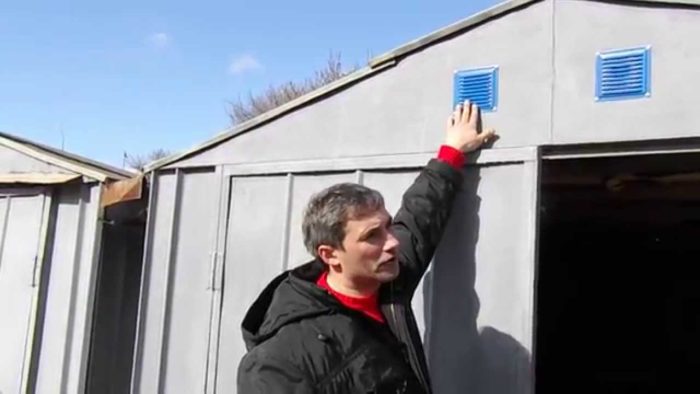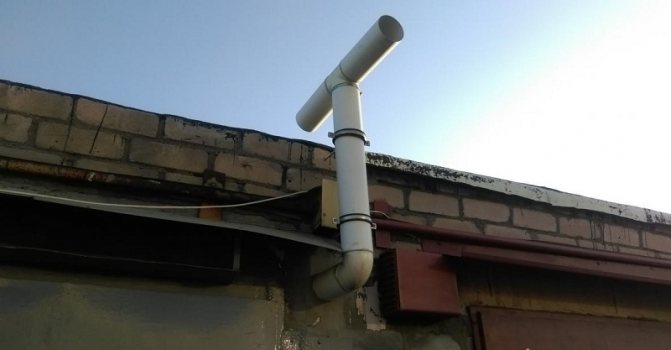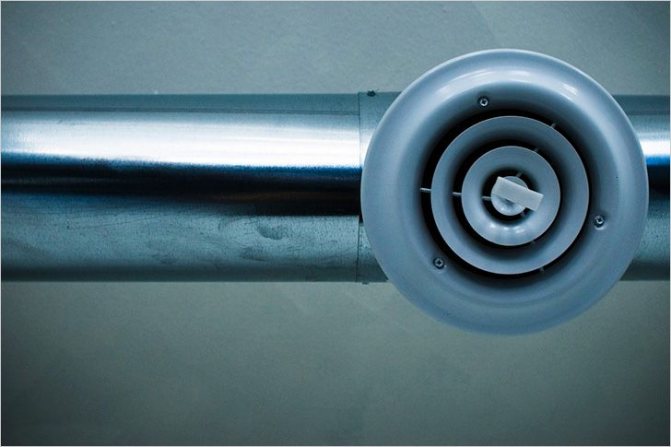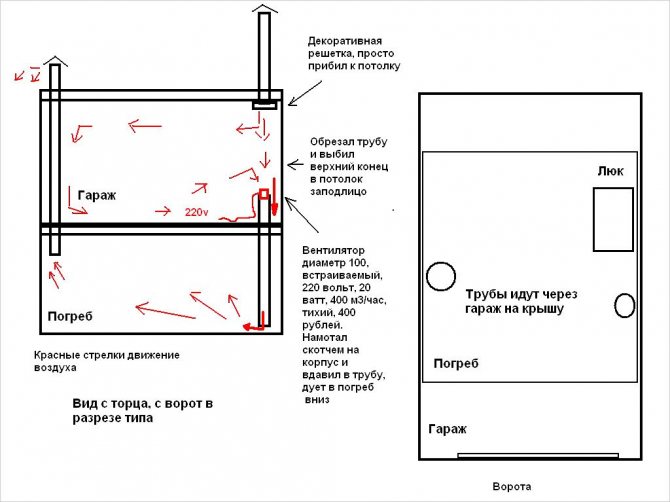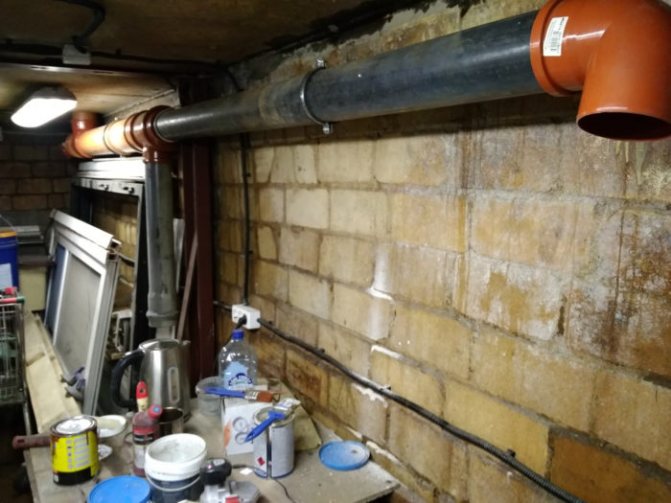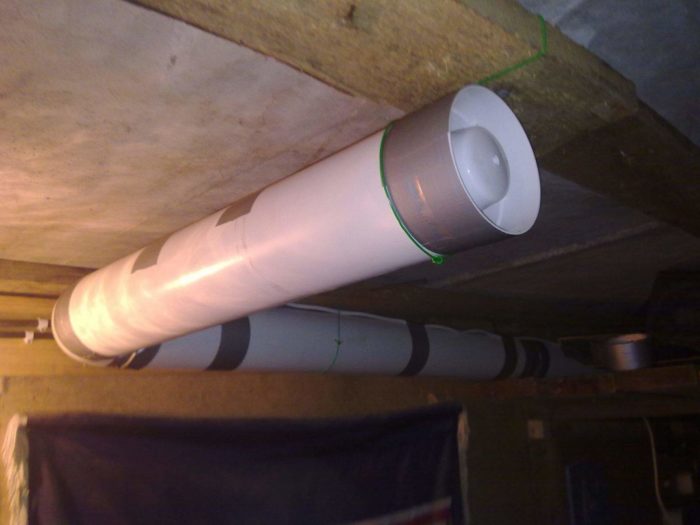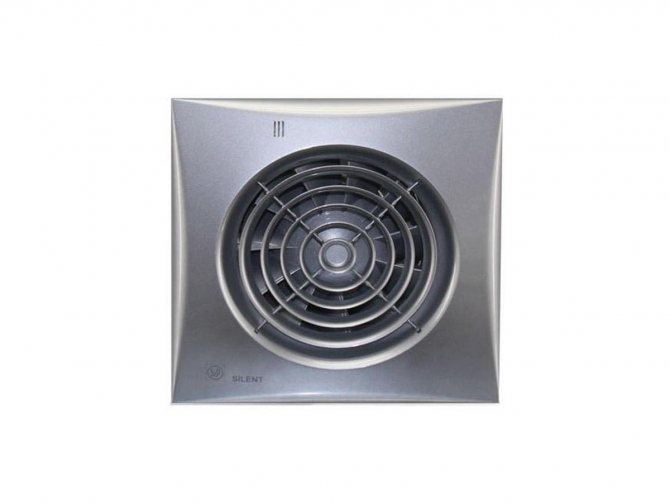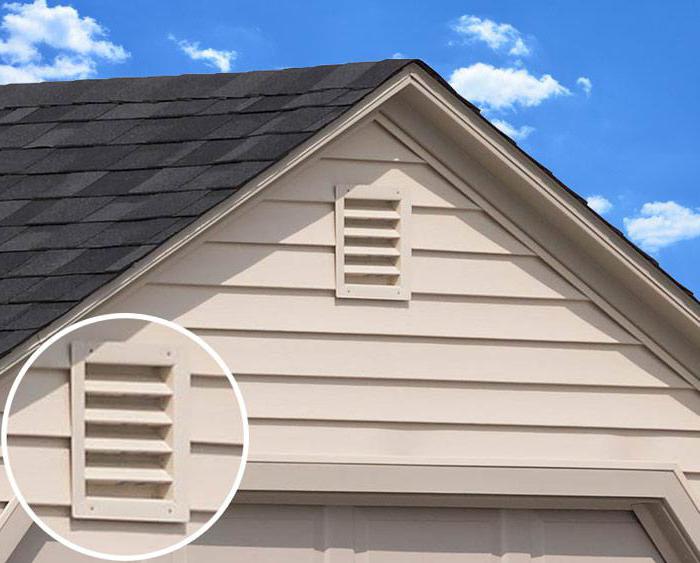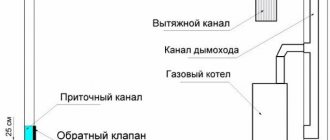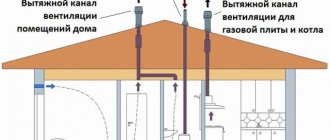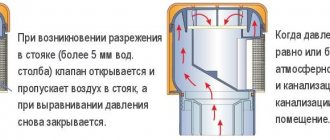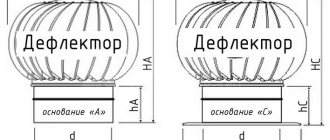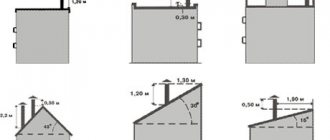Every owner wants to keep his car in good condition as long as possible. A dry, well-ventilated garage is considered a rare stroke of luck. And if you consider that city dwellers often store their own crops in the cellar of the garage, creating a favorable microclimate in it becomes task No. 1. Recommendations of the heading "Do-it-yourself ventilation in the garage, scheme, calculation and ventilation methods" will help you decide on the choice of ventilation system in the garage.
The organization of proper ventilation in the garage helps to remove the resulting condensation, the removal of exhaust gases and toxic fumes
Why do you need ventilation in the garage
If it is provided at the proper level, you can do the following:
- Make the air cleaner by removing harmful impurities associated with the operation of the car engine. Many drivers spend a significant amount of time fixing their car. Sometimes in the process of work it becomes necessary to turn on the motor. With a working hood, the exhaust gases will be quickly removed from the room.
- The garage is often used not only for vehicles. Sometimes vegetables can be stored there, for example. An increase in air humidity can lead to their deterioration. A high-quality hood will help solve this problem.
- Sometimes moisture can enter the room due to rain or snow. Proper ventilation will help remove excess moisture trapped inside.
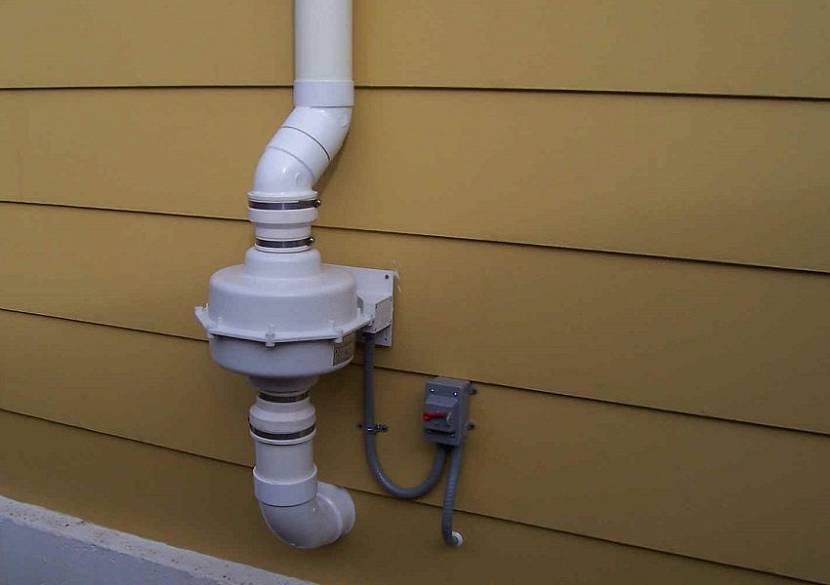
Forced garage ventilation system Source notperfect.ru
- Occasionally, condensation can form on the car or on the walls, which is damaging. A regular supply of fresh air will help prevent air from forming.
- Humidity is not only harmful to metal parts. In such conditions, fungus can form. It can be on the walls or, for example, on vegetables that some may store in the garage.
Breathable air, the absence of excessive humidity, a regular flow of fresh air will create not only a useful, but also a pleasant microclimate in the garage.
Is a garage possible without a hood?
Car garage
Of course, it is possible to build a garage without ventilation, but there will be a lot of problems in the future with such a room. Most car enthusiasts often put their car in a garage for the winter. But imagine if there is no ventilation system in it? In such a room, the car itself and parts will be exposed to corrosion.
In addition, in the garage, many people repair their car on their own. Often this work involves the use of chemicals that are very harmful to human health. Therefore, only a high-quality and properly arranged hood in the garage cellar can remove dangerous vapors from the room and reduce the risk to your own health.
Do not forget about high humidity in rooms without ventilation. Even high-quality heating in winter will not be able to solve this problem.
How ventilation works
In practice, various ventilation options can be used. They can be roughly divided on the basis of which principle of action is applied in each case.
The effectiveness depends on the quality of the insulation and waterproofing of the garage. If the walls or roof will allow moisture to pass through, the hood may not be able to cope with this.
Natural ventilation
It is possible to try to solve the existing problem with minimal effort. This option is the most widespread.


The easiest way to ventilate premises
See also: The most popular projects of garages and other "small forms" for a private house.
In this case, two ventilation holes will be required. One is at the bottom, near the ground. The other is under the ceiling. The most suitable hole diameter can be obtained with a simple calculation. One of the options for such a calculation suggests that for every square meter of garage area there is 2 centimeters of pipe diameter. That is, if its area is 6 sq. meters, then the pipe should have a diameter equal to 12 centimeters.
The principle of operation is based on the fact that the temperature in the room is usually higher than outside. Relatively cold air gets inside, which then heats up and exits through a hole in the ceiling. Instead, fresh air is supplied from the outside.
Most typical garages are 6 meters long and 3 meters wide. In this case, the diameter of each of the holes will be 27 centimeters.
Installation features:
- Instead of one lower one, you can use two, but smaller ones. In this case, their diameter should be 70% of the original size.
- Ventilation slots should be 10 to 15 centimeters above garage floor level.


Pipes are mounted to the ventilation holes Source chipmaker.ru
- On the other side, a pipe outlet is made under the ceiling. The latter is brought up, and the higher it is, the better the ventilation will work. It is believed that the minimum height cannot be less than half a meter.
- The slots must be sealed with a sealant, the lower holes must be closed with a grate, and the upper edge of the pipe is protected with a special tip that prevents precipitation from entering.
It must be remembered that although natural ventilation is much cheaper, the quality of its work does not always remain satisfactory. So, for example, in warm weather there will be practically no air flow.
It should be taken into account that when the air exits outside, condensation will form in the pipe. If nothing is done, then it will accumulate and flow down. To prevent this from happening, it must be removed regularly, for which a separate tank is usually installed.
As a result, due to the low efficiency of natural ventilation in a garage with a basement, it makes sense to consider purchasing quality equipment. Although it will take more money, in the end, the hood will provide high-quality ventilation in any weather.


Thus, you can check how effective the ventilation is.
Types of ventilation systems
A do-it-yourself hood for a garage is done almost any. When choosing a ventilation system, you need to understand that each option has important characteristics and properties, so you need to try to make the right choice. In the photo you can see the scheme of operation of each type, and on the video the installation system.
Natural ventilation
If you decide to choose this type of ventilation, then know that it can be implemented without problems, since this is done according to a simple scheme, you need to take care of the presence of ordinary blinds that will be installed in special holes.


Natural ventilation scheme
So:
- The deflector will purify the room from polluted air, which means that your garage will now have the microclimate that you need.
- The front wall of the garage is considered the most successful place where you can place the inlet, remember that the effect can be achieved only when you use the inlet correctly, its section should be three times the size of the deflector grille, remember this.
Attention: The deflector must be mounted vertically, and as for its outer part, do not forget that it will definitely need to be insulated, because this is an important condition.
- This type of ventilation is considered to be the simplest; no additional equipment is needed here; the whole system works according to the laws of physics and in a natural way ..
- In any case, it will avoid many problems, but remember and keep in mind that such a ventilation system is usually not able to provide the required quality of air purification, comparing it with other ventilation options.
Forced ventilation
- This type of ventilation is capable of providing forced air circulation. Many experts unanimously say that for garages, this ventilation option is best suited, so you can choose it. Only for forced circulation, you will need to install a small fan that can operate from 12 watts.
Attention: if the engine is not installed, then in the summer, when the air temperature inside and outside the room is the same, ventilation will not work.
Forced ventilation
This is an installation that includes a fan, a filter element and a heater.
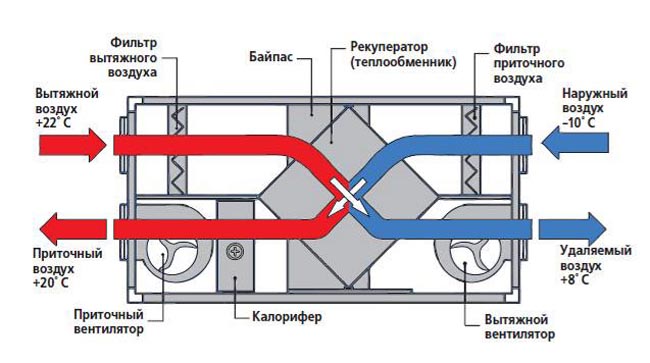

Supply ventilation scheme
- As soon as air begins to enter the ventilation duct, it instantly finds itself in the supply unit, where filtration will take place.
- Then the heated air begins to flow into the air distributor.
Attention: This result can be achieved only if you install an air duct on the walls of the supply grilles, and this must be done during the construction of the inspection pit, which many owners often forget.
- This system can be equipped with additional filters for air purification. This is great if you're doing paint jobs in the garage (see DIY painting a car in the garage).
- Air is supplied to the room along one duct line, after which it can go through pipes to any room. This is suitable if you need to maintain a certain temperature in the basement.
Exhaust ventilation
In the event that you decide to choose such ventilation for the garage, then you need to study in detail its principle of operation in order to understand exactly whether it is worth doing it or not. In fact, today, indeed, many owners often choose this type of ventilation system, as it is effective and reliable.
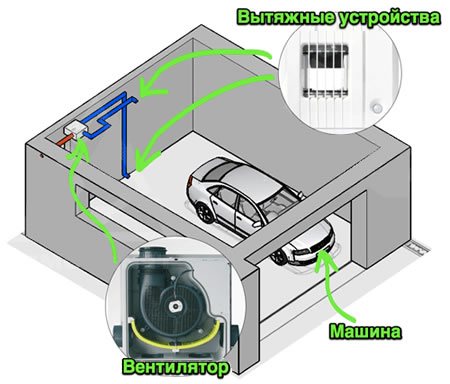

Exhaust ventilation diagram
So:
- Speaking in general about the scheme for organizing such ventilation, then you should know that it involves the use of special fans, not only axial, but also duct type, they are used in conjunction with an air duct, therefore, in any case, it will be possible to evaluate effective work in a large room.
- The duct fan differs in that it is able to provide an even distribution of air flows, and this is so important.
- But at the same time, it will require additional space for its placement, so this nuance must be taken into account.
- If the garage is located below ground level, then without fail, you must take into account that ventilation ducts, as a rule, must be treated with a special fire retardant, it can be easily purchased in retail chains.
- Also, to control the level of gas pollution, experts advise using special sensors, but to install them, additional costs are needed, remember this. But if you are doing welding work in the garage, then this will definitely work.
Ventilation of the garage under the house
Garages can be located separately, and in some cases they are located in the basement of an apartment building. Then the ventilation of the cellar in the garage becomes especially important.
At the same time, the general principles remain the same, but the implementation scheme is significantly different:
- The inlet, when viewed from the outside of the house, is still located at the very surface of the earth. A pipe begins from it, which passes into the building and goes vertically downward. In the garage, the hole is located near the floor.
- Proper ventilation in a basement garage is done as follows. The hood starts at the ceiling of the underground garage and goes vertically up to the roof. It is considered. That it should go up above the roof surface to a height of at least 50 centimeters.
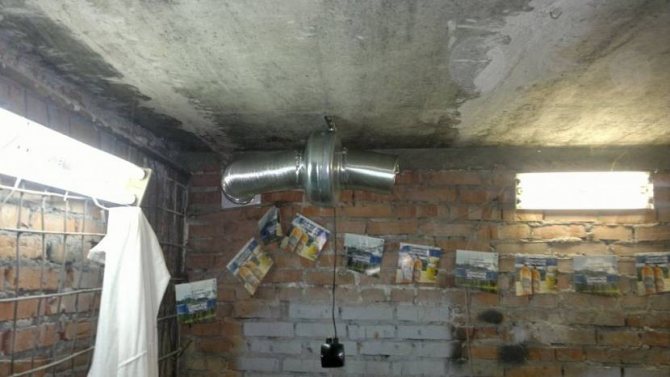

Exhaust pipe under the ceiling of the garage Source turbiruem.ru
- At the bottom of the hood there is a faucet for draining the condensate that has formed inside the pipe.
- The ventilation device in the basement of the garage is made in such a way that the external pipe exits must be closed from rain or snow.
- The outer outlet of the inlet pipe is closed with a lattice to prevent insects and small animals from entering.
It is unacceptable that the diameter of the pipe changes along its length.
Preparation: schematics
Before starting work, a diagram or plan is drawn up, on which the locations of ventilation holes and pipes for intake, air outflow, hole sizes are drawn, and the layout of ventilation ducts is drawn.
Examples of such schemes are given below. For garages without basements and attics, natural ventilation is used.


The simplest ventilation system (1 - air movement in the garage, 2 - air intake openings, 3 - air outlet)
The most correct scheme looks like this:
- from the floor to the air intake hole 10-15 cm; at the same distance, only to the ceiling of the opposite wall, arrange an exhaust;
- the diameter of the hole for the outlet of the air flow is half that of the intake,
- the ventilation pipe rises above the roof level by at least 0.5 m.
It should be noted that the scheme is designed for a garage with a height of at least 3 m. Since the inflow and outflow openings must be at a distance of 2.5–3 m.


Combined ventilation
Required tools and materials. Calculation
To speed up the work, the tools and materials needed to mount the ventilation are prepared in advance.
- Perforator;
- Bulgarian;
- Sealant and thermal insulation material;
- Grilles and / or louvers to protect openings from external contamination;
- Air outflow pipes made of metal or plastic with a cross section of 100–200 mm.
Fans are also needed if a combined system is being installed.


Without a reliable fan, making a combined system will not work
Consider these types:
1. Exhaust duct - available and easy to install. Electricity consumption is no more than 100 watts. Built-in regulators make it possible to change the ventilation intensity. You can also add additional sensors that will turn on the fan at certain humidity levels. The optimum device diameter is 160 mm, the cheaper and simpler option is 120 mm. The choice depends on the proximity to the garage of sources of moisture (rivers, lakes, groundwater).
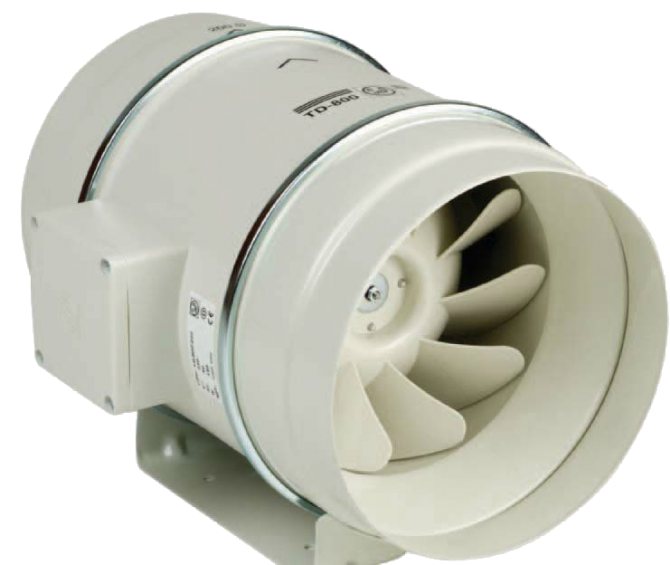

Exhaust duct fan
2. Centrifugal (radial, "snail"). They do the best with exhaust air extraction, but are expensive and difficult to install. They are used in garages where cars are painted.
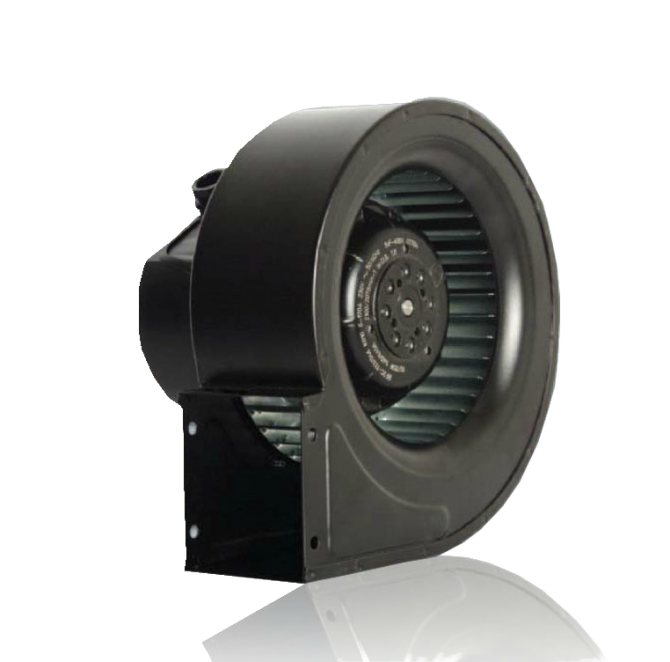

Centrifugal fan
3. Vortex. Devices of the third type are used to extract smoke when welding or cleaning nozzles.
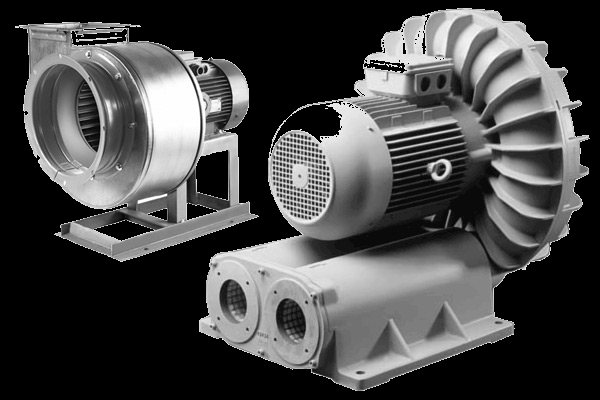

Vortex ventilation systems
The best option in a regular garage for one or two cars is an exhaust duct fan. It copes well with its functions, and at the same time is notable for its low cost.
Having drawn a diagram and choosing tools, the diameter of the ventilation ducts is calculated. Formulas are based on garage dimensions. For example, let's take a room with sides of 6 and 4 meters. The area is thus 24 m2. According to the requirements and norms, ten square meters of the garage need an air duct with a diameter of 15 cm.You can calculate the diameter of the duct using the following formula:
(S / a) * d, where S is the garage area, a - 10 m2, multiply by d - 15 cm of the duct diameter.
Bottom line: the diameter of the ventilation ducts is 36 cm. If there are two exhaust pipes, then the value is halved.
What to do if you have a metal garage
Many people use garages made in the form of a metal box. To ventilate them, consider the following:
- They do not have a viewing hole, so there is no need to ventilate the underground part.
- The garage is made of metal, so moisture and condensation threaten not only the car, but also the garage itself.
- There is no heating. Therefore, most of the year there are sharp changes in temperature, contributing to the formation of condensation.
- There is no connection to the mains, so it will not be possible to install a forced ventilation system.
Therefore, in this case, two rectangular holes are made, closed by gratings in the front and rear parts of the garage under the roof. This will provide ventilation.
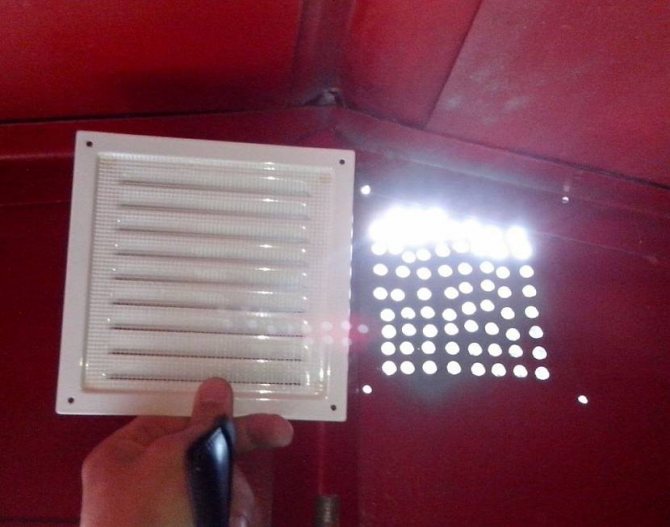

Grilles for ventilated windows
Garage with underground part
When purchasing a garage, the driver usually wants that there was a viewing hole in it. Ventilation is also required for this underground part. Usually, when installing it, the main focus is on the bottom.
In this case, the inlet pipe should exit at the floor of the garage itself. A pipe is also installed, one hole of which is located at the floor of the inspection pit, and the other at the floor of the garage. In this case, the outlet pipe is located at the top of the inspection pit.


This arrangement of ventilation holes ensures a steady flow of air Source chonemuzhik.ru
Do I need to buy forced ventilation
Suppose the simplest hood was installed earlier. Here are the signs that can be used to determine whether her job is satisfied:
- In the room, the air remains stale all the time.
- Stains from dry condensation regularly appear on the walls.
- Fungus or mold has appeared.
First, you can take steps to improve the efficiency of the hood. This can be achieved using one of the following methods:
- Make the diameter of the ventilation pipes larger.
- Make sure that the outer opening of the outlet pipe is higher than before.
- Additional inlet and outlet pipes can be made.
- If there is an electrical connection, install a fan to improve air circulation. It is often sufficient to install it on a chimney.
If this does not help, it makes sense to think about purchasing a high-quality forced ventilation system, provided that it is possible to provide it with power.
Duct fan installation
The hood in the garage can be installed with the participation of a duct fan. This requires 2 holes of different diameters. A hole is made in the wall, into which a plastic nozzle is first installed. Next, a fan is mounted in it. The device is connected to the corrugated pipe using clamps.
Having considered the technology of creating a hood in the garage, as well as the importance of arranging such a system, each owner of such a room will be able to do all the work efficiently. If you wish, you can do this yourself. The absence of dampness and toxic substances inside the garage will allow it to operate in full for a long time.
